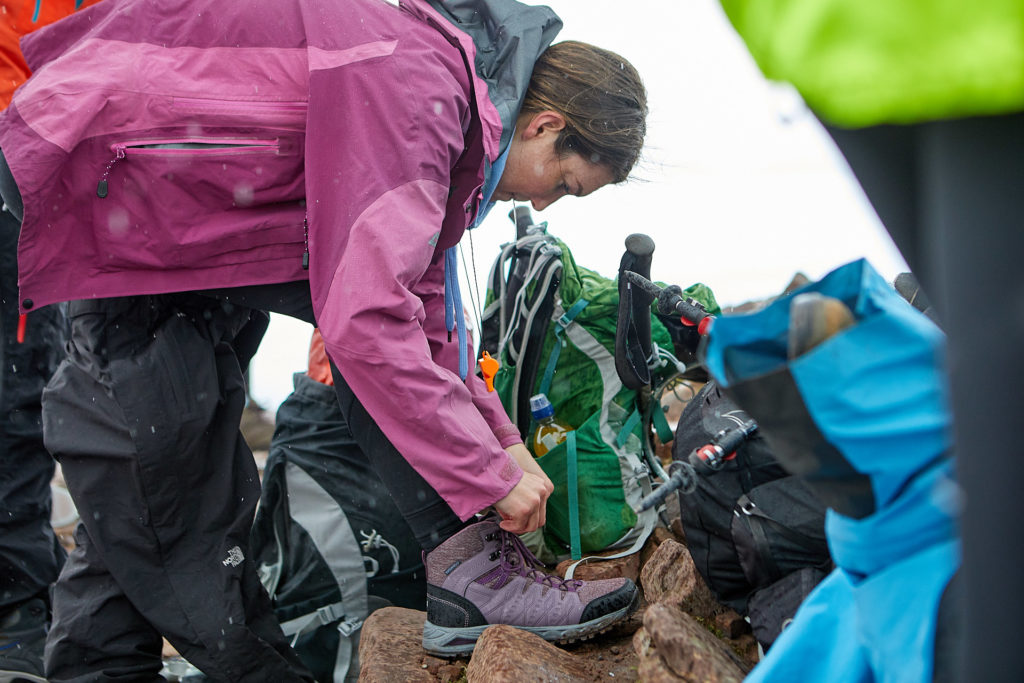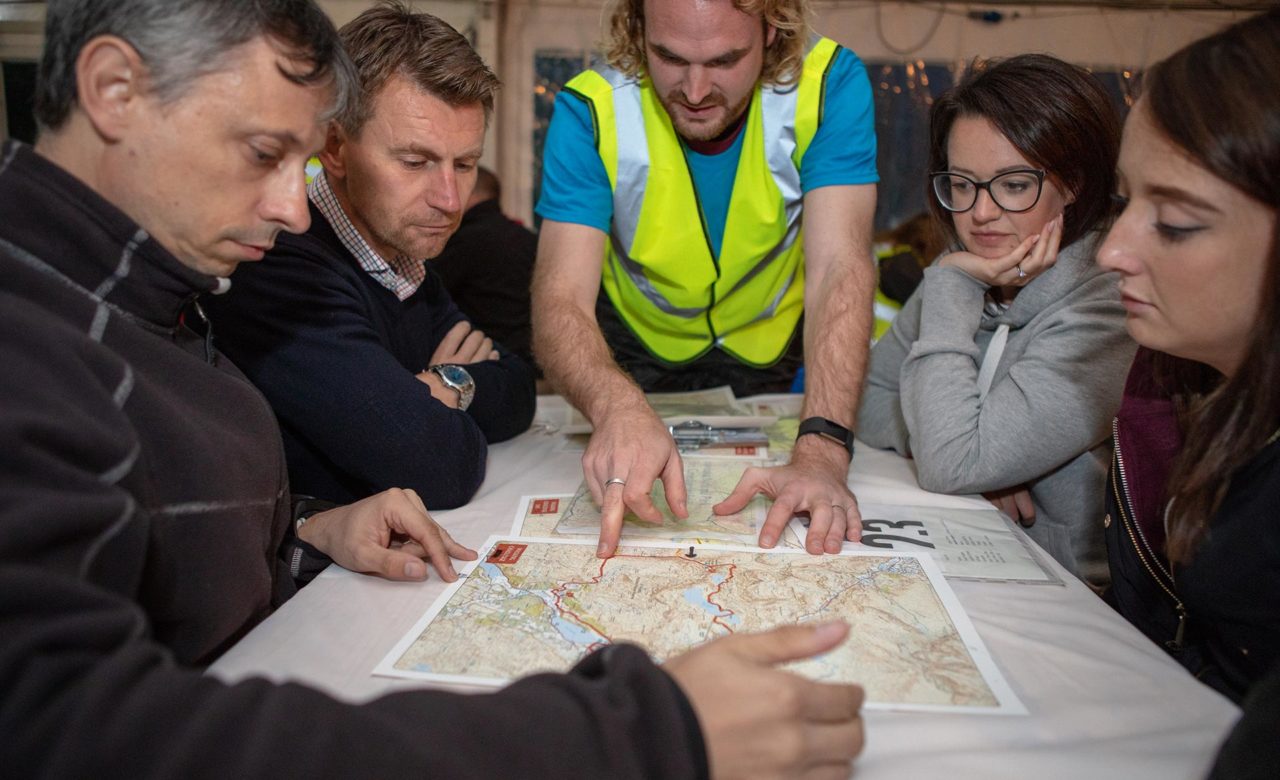-
What do I need to bring?
Our Challenge Equipment Checklist details all of the items you’ll need to bring with you either as an individual, to keep warm and dry, or as a team, to ensure safety and accurate navigation, but also take a look at the drop-downs below for more details!
Event staff at Youth Adventure Trust events will scrutinise individual and team equipment and those individuals or teams not suitable equipped will be prevented from starting.
If you are taking on your own challenge you’ll need to double check whether a kit list is provided as many events issue an essential/mandatory item list.
-
What footwear do I need?
Your most important item of equipment is your walking boots. It is the single piece of equipment that we prioritise above all! Walking boots need to be ‘walked-in’ prior to the challenge – new walking boots and long distance hikes are a recipe for disaster – you’ll end up with lots of painful blisters and your enjoyment of the challenge will be minimised! Similarly, we advise you don’t borrow walking boots for the same reason. A reasonable pair can be purchased for under £80 and will be a good investment for the challenge and any other hiking, trekking & walking you partake in the future.
-
What clothing do I need?
Appropriate clothing essentially consists of three main layers:
- Base Layer:
This layer sits next to your skin and should be capable of
transferring or ‘wicking’ moisture away from your body - Mid Layer:
Needs to be thicker; typically a fleece or something similar. This
is where the moisture wicked away by the base-layer will collect to
evaporate. - Outer Layer: Should be both windproof and waterproof. Most of the
fabrics available are also breathable allowing moisture vapour to
pass out through a semi-permeable membrane. Waterproof over-trousers
may also be needed if the weather is very wet and will provide added
protection form the wind.
Added accessories such as a hat, gloves and buff are also advised. Check out our equipment checklist for more information.
Tip: Carry spare clothing in your rucksack in a protective waterproof bag.
- Base Layer:
-
Do I need walking poles?
Yes! You should ensure that at least one, ideally two, members of your team have walking poles. They reduce stress on your knees during areas of descent and are useful in cases of injury to help assist the individual off the mountain, preventing a full-scale rescue.
-
Do I need a head torch?
Absolutely! Our challenges have early starts and therefore it’s very often still dark when you set off. Every individual should carry one for the duration of the hike in case of emergency or poor weather conditions causing bad visibility.
-
Do I need a rucksack?
Whilst you are not going on a major expedition, it is a good idea to carry all necessary kit in a comfortable pack or rucksack. A day sack will usually be sufficient. As with the boots, try to make sure you have used it previously, perhaps during your training walks. It might feel comfortable in the car park but when you have been walking with it on your back for eight hours it could be an entirely different matter. Best to find this out before the day of the challenge!
-
What should I eat on the hike?
When hiking, it is important not to wait until you are hungry before eating. Eat little and often keeping your body topped up with energy. You will need to provide your own food for during the walk.
Recommended: Weight is important so try to opt for easy to eat, lightweight foods such as:
- Sandwiches with simple fillings that are easy to prepare, easy to eat and easy to digest
- Cereal bars
- Chocolate bars
- Fruit and nuts & raisin mixes.
Avoid:
- Foods high in fat such as pies and pasties as they can be physically difficult to consume and take time to digest in order to provide you with the energy you need.
-
What should I eat before and after the challenge?
Making the right food choices just before and after training can significantly improve the result of the session.
Your diet in the week leading up to the event should include plenty of carbohydrates. Our top picks are wholemeal bread, bananas, sweet potatoes, blueberries and brown rice. Processed, sugary and saturated/trans fatty foods should be avoided as much as possible, particularly in the immediate run-up to the event.
Have a look at our table below for suggested snacks before and after your workout:
Pre-Workout
- 2 apples
- 1 large pear
- 2 tablespoons of raisins
- 3 crispbreads
- 250ml of orange juice.
Post-Workout (within 2 hours is advised)
- 2 thick slices of malt loaf
- 2 rice crispie chocolate squares
- 2 slices of wholemeal bread and jam
- 2 large bananas
- 80g raisins
-
What should I drink?
You will need to drink frequently during the event to replace the fluids you are using as you perspire. Every team member will need to carry at least 1 litre of water and we will let you know if there is anywhere to refill your containers on the route.
You will also lose valuable salts and minerals as you perspire. To replace these consider an isotonic additive. These can be bought from sports and health food shops in the form of a powder and mixed with water, or ready-made such as Lucozade Sport.



